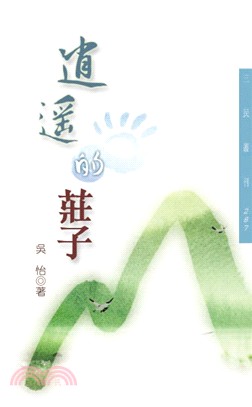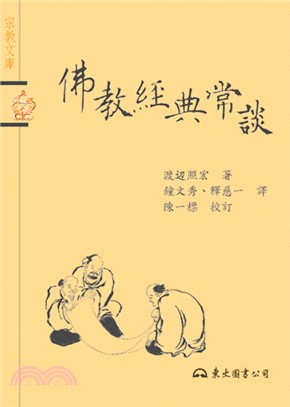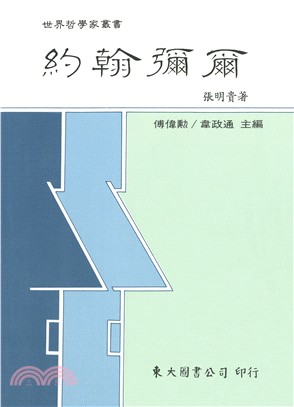The Nanoscience in Translational Medicine
- 系列名:Medical Care
- ISBN13:9789571178394
- 出版社:五南圖書出版
- 作者:Hossein Hosseinkhani; Keng-Liang Ou
- 裝訂/頁數:精裝/362頁
- 規格:23.7cm*18cm*2cm (高/寬/厚)
- 版次:1
- 出版日:2015/06/29
定 價:NT$ 1600 元
優惠價:95 折 1520 元
團購優惠券A
8本以上且滿1500元
再享95折,單本省下76元
再享95折,單本省下76元
領
無庫存,下單後進貨(採購期約4~10個工作天)
可得紅利積點:45 點
相關商品
商品簡介
作者簡介
目次
書摘/試閱
商品簡介
Nanoscience is a part of science that studies small stuff, it’s not biology, physics or chemistry, it’s all sciences that work with the very small. Nanotechnology is the art and science of making useful stuff that does stuff on the nanometer length scale and includes advances in all industries, including the electronic, chemical, medical, and pharmaceutical. Nanomedicine is the medical application of nanotechnology and related research which is innovative technology of materials science and biology. Designed as a broad survey of the field, this book is divided into three main sections:
•Nanophysic
•Nanochemistry
•Nanomedicine
Each chapter describes in detail currently valuable methods and contains numerous references to the primary literature, making this the perfect “filed guide” for biologists and physicians who want to explore the fascinating world of nanotechnology.
•Nanophysic
•Nanochemistry
•Nanomedicine
Each chapter describes in detail currently valuable methods and contains numerous references to the primary literature, making this the perfect “filed guide” for biologists and physicians who want to explore the fascinating world of nanotechnology.
作者簡介
Hossein Hosseinkhani
Prof. Hossein Hosseinkhani received his B.Sc degree (National Gold Medalist) in Chemical Engineering from Polytechnique University, M.Sc degree (First class, First rank) in Chemical Engineering from Tarbiat Modarres University, and Ph.D degree (Excellent with Honor) in Polymer Chemistry in the field of Biomedical Engineering from Kyoto University in 2002. Dr. Hosseinkahni has broad experience in life sciences and is expert in nanotechnology, biomaterials and stem cells technology for regenerative medicine and biomedical engineering applications. He has been awarded several prestigious fellowships including JSPS Fellowship of Japan at Institute for Frontier Medical Sciences, Kyoto University Hospital (2002–2004), ICYS Research Fellow of Japan at Notational Institute for Materials Science (2004–2008), IRIIMS Research Fellow of Japan at International Research Institute for Integrated Medical Sciences, Tokyo Women’s Medical University (2008–2009), and Visiting Scientist at Center for Biomedical Engineering, Massachusetts Institute of Technology (MIT), USA (2007–2009). Dr. Hosseinkhani has 50 issued Japan and U.S. patents, several U.S. patents pending and has authored over 100 international publications in prestigious international journals and over 200 presentations at international conferences till present time. Currently, he is Director of Bioengineering Program and Professor at the Graduate Institute of Biomedical Engineering, National Taiwan University of Science and Technology (Taiwan Tech).
Keng-Liang Ou
Professor Keng-Liang Ou obtained his Ph.D. degree from Graduate Institute of Mechanical Engineering, National Chiao Tung University, Taiwan. He joined Taipei Medical University to pursue the cutting-edge research of biomaterials and currently holds the position of Dean of College of Oral Medicine. He is also the Director of Research Center for Biomedical Implants and Microsurgery Devices and the Director of Research Center for Biomedical Devices and Prototyping Production. Besides institutional appointment, Prof. Ou serves as the President of Institute of Plasma Engineering in Taiwan, the Director of the Taiwan Society for Metal Heat Treatment, the President of Taiwan Oral Biomedical Engineering Association and the Director of Yongee Anti-cancer Foundation. Professor Ou devotes himself to the novel research in the fields of biomaterials, bioengineering, biosensing, bioimaging, and translational medicine. In addition, he establishes extensive collaborations with industry and has played a leading role in developing medical devices for health professionals worldwide. He is the leader and organizer for the biomedical product design, production, manufacturing, testing, legalization and market planning, with supports from teams of scientists and researchers with expertise in different fields. With the outstanding accomplishments in research and invention, Professor Ou received the Award of the Ten Outstanding Young Persons of Taiwan in the year of 2011 and the TMU Distinguished University Professor Award in 2014.
Prof. Hossein Hosseinkhani received his B.Sc degree (National Gold Medalist) in Chemical Engineering from Polytechnique University, M.Sc degree (First class, First rank) in Chemical Engineering from Tarbiat Modarres University, and Ph.D degree (Excellent with Honor) in Polymer Chemistry in the field of Biomedical Engineering from Kyoto University in 2002. Dr. Hosseinkahni has broad experience in life sciences and is expert in nanotechnology, biomaterials and stem cells technology for regenerative medicine and biomedical engineering applications. He has been awarded several prestigious fellowships including JSPS Fellowship of Japan at Institute for Frontier Medical Sciences, Kyoto University Hospital (2002–2004), ICYS Research Fellow of Japan at Notational Institute for Materials Science (2004–2008), IRIIMS Research Fellow of Japan at International Research Institute for Integrated Medical Sciences, Tokyo Women’s Medical University (2008–2009), and Visiting Scientist at Center for Biomedical Engineering, Massachusetts Institute of Technology (MIT), USA (2007–2009). Dr. Hosseinkhani has 50 issued Japan and U.S. patents, several U.S. patents pending and has authored over 100 international publications in prestigious international journals and over 200 presentations at international conferences till present time. Currently, he is Director of Bioengineering Program and Professor at the Graduate Institute of Biomedical Engineering, National Taiwan University of Science and Technology (Taiwan Tech).
Keng-Liang Ou
Professor Keng-Liang Ou obtained his Ph.D. degree from Graduate Institute of Mechanical Engineering, National Chiao Tung University, Taiwan. He joined Taipei Medical University to pursue the cutting-edge research of biomaterials and currently holds the position of Dean of College of Oral Medicine. He is also the Director of Research Center for Biomedical Implants and Microsurgery Devices and the Director of Research Center for Biomedical Devices and Prototyping Production. Besides institutional appointment, Prof. Ou serves as the President of Institute of Plasma Engineering in Taiwan, the Director of the Taiwan Society for Metal Heat Treatment, the President of Taiwan Oral Biomedical Engineering Association and the Director of Yongee Anti-cancer Foundation. Professor Ou devotes himself to the novel research in the fields of biomaterials, bioengineering, biosensing, bioimaging, and translational medicine. In addition, he establishes extensive collaborations with industry and has played a leading role in developing medical devices for health professionals worldwide. He is the leader and organizer for the biomedical product design, production, manufacturing, testing, legalization and market planning, with supports from teams of scientists and researchers with expertise in different fields. With the outstanding accomplishments in research and invention, Professor Ou received the Award of the Ten Outstanding Young Persons of Taiwan in the year of 2011 and the TMU Distinguished University Professor Award in 2014.
目次
Contents
Chapter 1 Nanofabrication
1.1 ntroduction
1.2 Size Matters
1.3 Nanofabrication
1.4 Impact of Nanotechnology
1.5 Nanotechnology Applications
1.6 Summary and Challenges
References
Chapter 2 Self-Assembled Nanomaterials
2.1 Introduction
2.2 Classification of Self-Assembled Systems
2.3 In vitro Biological Approaches of Self-Assembled Systems
2.4 Regenerative Medicine Therapy
2.5 Future Prospects
References
Chapter 3 Nanoparticles in Gene Therapy
3.1 Introduction
3.2 Approaches to Gene Therapy
3.3 Physical Methods for Gene Delivery
3.4 Combination of Physical and Non-viral Methods to Enhance DNA Nanoparticle Uptake by the Cells
3.5 Summary
References
Chapter 4 Dry Particles Coating Processes
4.1 Introduction
4.2 Dry Coating Process
4.3 Determination of Particles
4.4 Application of Dry Coating Process
4.5 Current and Future Developments
References
Chapter 5 Polymeric Nanoparticles for Therapy and Imaging
5.1 Introduction
5.2 Polymeric Nanoparticles in MRI
Technology and Disease Therapy
5.3 Surface Coating Polymer in Nanoparticles
5.4 Drug Delivery with Polymeric Nanoparticles
5.5 Stimuli-Sensitive Drug Delivery
5.6 Multifunction of Targeted Drug Delivery
5.7 Gene Transfer via Polymeric Nanoparticles in Drug Delivery
5.8 Magnetic Hyperthermia
5.9 Summary
References
Chapter 6 Modified Release Natural Polymerci Nanoparticles
in Drug Delivery Technology
6.1 Introduction
6.2 Polymers
6.3 Fabrication of Particles by Using Natural
Polymers
6.4 Modified Prticles
6.5 Oral Delivery Systems
6.6 Formulation Approaches for Local Delivery
6.7 Role of Buccal Permeation Enhancer
6.8 Overview of Novel Buccal Drug Delivery Devices
6.9 Conclusion and Future Prospects
References
Chapter 7 Nanopattering Technology
7.1 Introduction
7.2 Three Dimensional (3D) Scaffolding Materials for Biological Application
7.3 Current Approaches of Nanofabrication
by Using Lithography
7.4 Future Approaches
7.6 Milestones, Deliverables, and Economic Potential
References
Chapter 1 Nanofabrication
1.1 ntroduction
1.2 Size Matters
1.3 Nanofabrication
1.4 Impact of Nanotechnology
1.5 Nanotechnology Applications
1.6 Summary and Challenges
References
Chapter 2 Self-Assembled Nanomaterials
2.1 Introduction
2.2 Classification of Self-Assembled Systems
2.3 In vitro Biological Approaches of Self-Assembled Systems
2.4 Regenerative Medicine Therapy
2.5 Future Prospects
References
Chapter 3 Nanoparticles in Gene Therapy
3.1 Introduction
3.2 Approaches to Gene Therapy
3.3 Physical Methods for Gene Delivery
3.4 Combination of Physical and Non-viral Methods to Enhance DNA Nanoparticle Uptake by the Cells
3.5 Summary
References
Chapter 4 Dry Particles Coating Processes
4.1 Introduction
4.2 Dry Coating Process
4.3 Determination of Particles
4.4 Application of Dry Coating Process
4.5 Current and Future Developments
References
Chapter 5 Polymeric Nanoparticles for Therapy and Imaging
5.1 Introduction
5.2 Polymeric Nanoparticles in MRI
Technology and Disease Therapy
5.3 Surface Coating Polymer in Nanoparticles
5.4 Drug Delivery with Polymeric Nanoparticles
5.5 Stimuli-Sensitive Drug Delivery
5.6 Multifunction of Targeted Drug Delivery
5.7 Gene Transfer via Polymeric Nanoparticles in Drug Delivery
5.8 Magnetic Hyperthermia
5.9 Summary
References
Chapter 6 Modified Release Natural Polymerci Nanoparticles
in Drug Delivery Technology
6.1 Introduction
6.2 Polymers
6.3 Fabrication of Particles by Using Natural
Polymers
6.4 Modified Prticles
6.5 Oral Delivery Systems
6.6 Formulation Approaches for Local Delivery
6.7 Role of Buccal Permeation Enhancer
6.8 Overview of Novel Buccal Drug Delivery Devices
6.9 Conclusion and Future Prospects
References
Chapter 7 Nanopattering Technology
7.1 Introduction
7.2 Three Dimensional (3D) Scaffolding Materials for Biological Application
7.3 Current Approaches of Nanofabrication
by Using Lithography
7.4 Future Approaches
7.6 Milestones, Deliverables, and Economic Potential
References
書摘/試閱
1. Introduction
Nano-science is a part of science that studies small stuff, it’s not biology, physics or chemistry, it’s all sciences that work with the very small. Nanotechnology is the art and science of making useful stuff that does stuff on the nanometer length scale and includes advances in all industries, including the electronic, chemical, and pharmaceutical (Table 1).
Nanotechnology is the engineering of functional systems at the molecular scale. This covers both current work and concepts that are more advanced. Nanotechnology is sometimes referred to as a general-purpose technology. That's because in its advanced form it will have significant impact on almost all industries and all areas of society. It will offer better built, longer lasting, cleaner, safer, and smarter products for the home, for communications, for medicine, for transportation, for agriculture, and for industry in general. A key understanding of nanotechnology is that it offers not just better products, but a vastly improved manufacturing process. The power of nanotechnology can be encapsulated in an apparently simple device called a personal nanofactory that may sit on your countertop or desktop. Packed with miniature chemical processors, computing, and robotics, it will produce a wide-range of items quickly, cleanly, and inexpensively, building products directly from blueprints. Nowadays, nanotechnology have great impact on development of wide range area of science and technology including; Information Technology (IT) that provide smaller, faster, more energy efficient and powerful computing and other IT-based systems; Energy that provide more efficient and cost effective technologies for energy production such as in solar cells, fuel cells, batteries, and bio fuels; Consumer Goods that provide foods and beverages for advanced packaging materials, sensors, and lab-on-chips for food quality testing, appliances and textiles for stain proof, water proof and wrinkle free textiles, household and cosmetics for self-cleaning and scratch free products, paints, and better cosmetics; Medicine that provide technology for imaging, cancer treatment, medical tools, drug delivery, diagnostic tests, and drug development [1-7]. Table 2 shows brief history of development of nanotechnology.
2. Size Matters
It’s not just how big you are, it’s what you can do with it (Figure 1). Nanoscale Size Effect can be summarized as following:
• Realization of miniaturized devices and systems while providing more functionality
• Attainment of high surface area to volume ratio
• Manifestation of novel phenomena and properties, including changes in:
- Physical Properties (e.g. melting point)
- Chemical Properties (e.g. reactivity)
- Electrical Properties (e.g. conductivity)
- Mechanical Properties (e.g. strength)
- Optical Properties (e.g. light emission)
For instance, when carbon is a pure solid it is found as graphite or diamond. On the nano scale, carbon takes on very different structures and therefore provides different properties (Figure 2).
Nano is a prefix that means very, very, small. The word nano is from the Greek. Word ‘Nanos’ meaning Dwarf. It is a prefix used to describe "one billionth" of something, or 0.000000001. Nanoscience is a part of science that studies small stuff. It’s not biology, physics or chemistry. It’s all sciences that work with the very small. Nanotechnology is the art and science of making useful stuff that does stuff on the nanometre length scale and includes advances in all industries, including the electronic, chemical, pharmaceutical, and medical. Figure 2 illustrate the scale of nanoscience while Figure 3 shows the importance of size matter in nature. Table 3 summarize nanoscale materials.
3. Nanofabrication
Nanofabrication aims at building nanoscale structures (0.1–100 nm), which can act as components, devices, or systems with desired properties, performance, reliability, reproducibility, in large quantities at low cost. Nanofabrication is used in several industrial applications including:
Information storage
Opto-electronics
Sensors
Micro-electro-mechanical (MEMs) devices
Power semiconductors
Pharmaceuticals
Bio-medical applications
Microelectronics (chips)
About 1020 transistors (or 10 billion for every person in the world) are manufactured every year based on VLSI (Very Large Scale Integration), ULSI (Ultra Large Scale Integration), and GSI (Giga-Scale Integration). Variations of this versatile technology are used for flat-panel displays, micro-electro-mechanical systems (MEMS), as well as for chips for DNA screening. More conventional applications of nanofabrication can be seen in the information storage of computers, cell phones, and digital sound and images. Nano structure and device can be accomplished by two approaches; top down and bottom up methods.
Nano-science is a part of science that studies small stuff, it’s not biology, physics or chemistry, it’s all sciences that work with the very small. Nanotechnology is the art and science of making useful stuff that does stuff on the nanometer length scale and includes advances in all industries, including the electronic, chemical, and pharmaceutical (Table 1).
Nanotechnology is the engineering of functional systems at the molecular scale. This covers both current work and concepts that are more advanced. Nanotechnology is sometimes referred to as a general-purpose technology. That's because in its advanced form it will have significant impact on almost all industries and all areas of society. It will offer better built, longer lasting, cleaner, safer, and smarter products for the home, for communications, for medicine, for transportation, for agriculture, and for industry in general. A key understanding of nanotechnology is that it offers not just better products, but a vastly improved manufacturing process. The power of nanotechnology can be encapsulated in an apparently simple device called a personal nanofactory that may sit on your countertop or desktop. Packed with miniature chemical processors, computing, and robotics, it will produce a wide-range of items quickly, cleanly, and inexpensively, building products directly from blueprints. Nowadays, nanotechnology have great impact on development of wide range area of science and technology including; Information Technology (IT) that provide smaller, faster, more energy efficient and powerful computing and other IT-based systems; Energy that provide more efficient and cost effective technologies for energy production such as in solar cells, fuel cells, batteries, and bio fuels; Consumer Goods that provide foods and beverages for advanced packaging materials, sensors, and lab-on-chips for food quality testing, appliances and textiles for stain proof, water proof and wrinkle free textiles, household and cosmetics for self-cleaning and scratch free products, paints, and better cosmetics; Medicine that provide technology for imaging, cancer treatment, medical tools, drug delivery, diagnostic tests, and drug development [1-7]. Table 2 shows brief history of development of nanotechnology.
2. Size Matters
It’s not just how big you are, it’s what you can do with it (Figure 1). Nanoscale Size Effect can be summarized as following:
• Realization of miniaturized devices and systems while providing more functionality
• Attainment of high surface area to volume ratio
• Manifestation of novel phenomena and properties, including changes in:
- Physical Properties (e.g. melting point)
- Chemical Properties (e.g. reactivity)
- Electrical Properties (e.g. conductivity)
- Mechanical Properties (e.g. strength)
- Optical Properties (e.g. light emission)
For instance, when carbon is a pure solid it is found as graphite or diamond. On the nano scale, carbon takes on very different structures and therefore provides different properties (Figure 2).
Nano is a prefix that means very, very, small. The word nano is from the Greek. Word ‘Nanos’ meaning Dwarf. It is a prefix used to describe "one billionth" of something, or 0.000000001. Nanoscience is a part of science that studies small stuff. It’s not biology, physics or chemistry. It’s all sciences that work with the very small. Nanotechnology is the art and science of making useful stuff that does stuff on the nanometre length scale and includes advances in all industries, including the electronic, chemical, pharmaceutical, and medical. Figure 2 illustrate the scale of nanoscience while Figure 3 shows the importance of size matter in nature. Table 3 summarize nanoscale materials.
3. Nanofabrication
Nanofabrication aims at building nanoscale structures (0.1–100 nm), which can act as components, devices, or systems with desired properties, performance, reliability, reproducibility, in large quantities at low cost. Nanofabrication is used in several industrial applications including:
Information storage
Opto-electronics
Sensors
Micro-electro-mechanical (MEMs) devices
Power semiconductors
Pharmaceuticals
Bio-medical applications
Microelectronics (chips)
About 1020 transistors (or 10 billion for every person in the world) are manufactured every year based on VLSI (Very Large Scale Integration), ULSI (Ultra Large Scale Integration), and GSI (Giga-Scale Integration). Variations of this versatile technology are used for flat-panel displays, micro-electro-mechanical systems (MEMS), as well as for chips for DNA screening. More conventional applications of nanofabrication can be seen in the information storage of computers, cell phones, and digital sound and images. Nano structure and device can be accomplished by two approaches; top down and bottom up methods.
主題書展
更多主題書展
更多書展本週66折
您曾經瀏覽過的商品
購物須知
為了保護您的權益,「三民網路書店」提供會員七日商品鑑賞期(收到商品為起始日)。
若要辦理退貨,請在商品鑑賞期內寄回,且商品必須是全新狀態與完整包裝(商品、附件、發票、隨貨贈品等)否則恕不接受退貨。

























